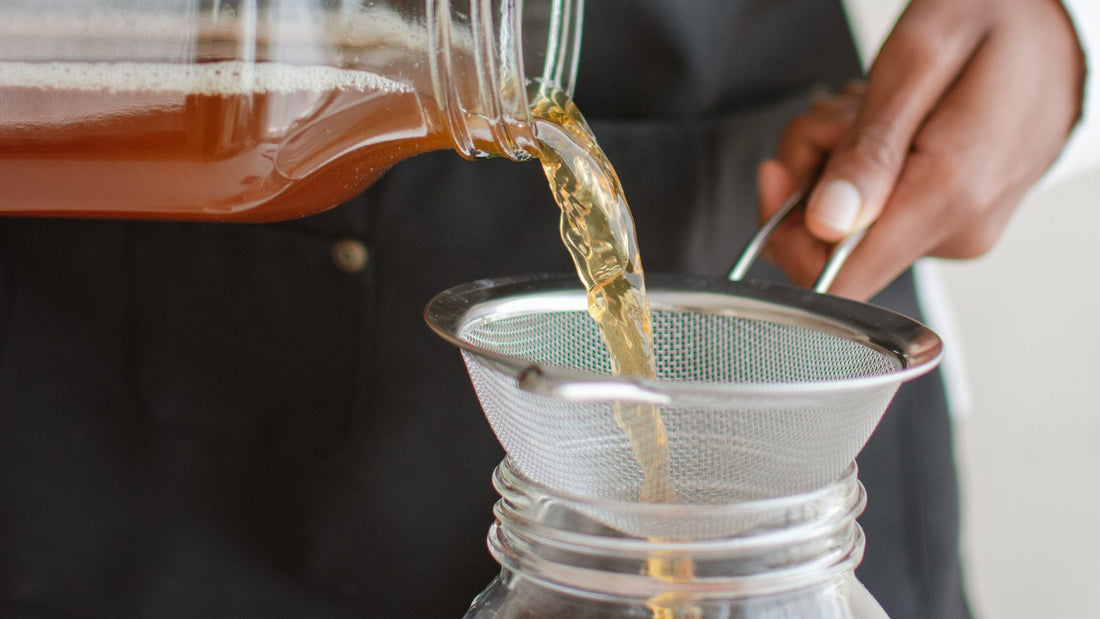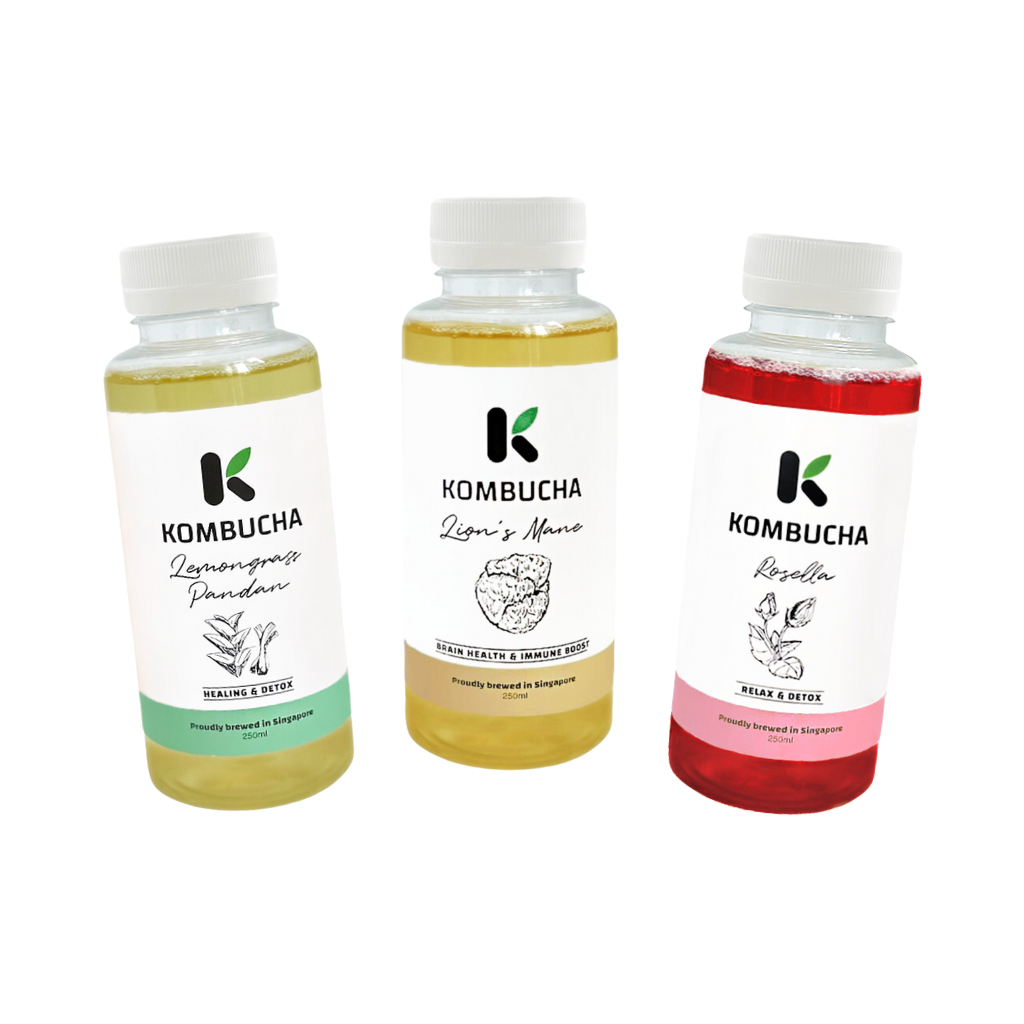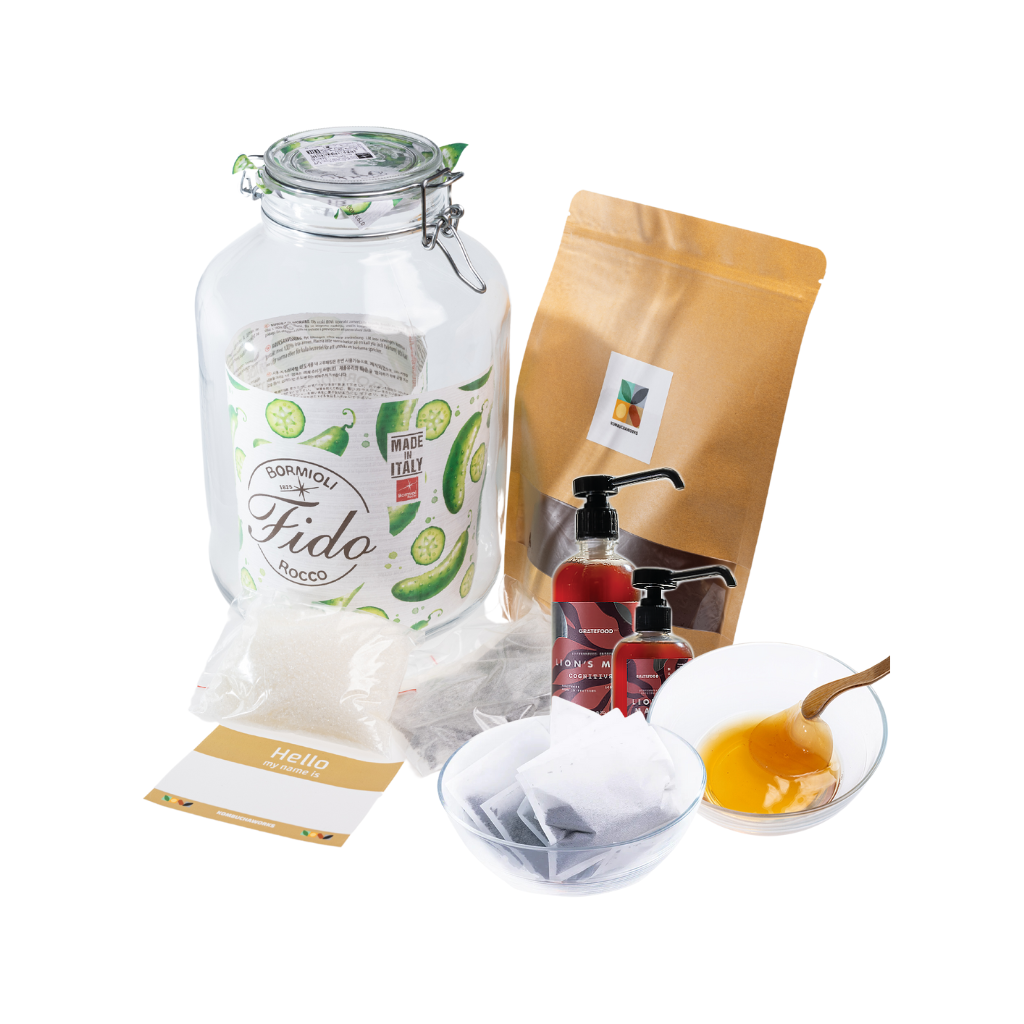Thinking of straining your kombucha to get rid of yeastie beasties? In this article we look at different straining methods and additional brewing perks of straining. We also have a look at when is the best time to sieve your kombucha.
Kombucha can contain varying amounts of particulate. Thinking of straining your kombucha to get rid of yeast strands? In this article we look at different straining methods and additional brewing perks of straining. We also have a look at when is the best time to sieve your kombucha. The fine particles which are often suspended in kombucha, or which collect at the bottom. These particles are mostly made up of yeasts. These yeast particles are completely harmless, and in fact boast probiotic benefits. However it is not an uncommon practice amongst kombucha brewers to remove them via straining.
Reasons for Removing Particulate From Kombucha
The most prevalent reason for removing particulate is aesthetics. Kombucha which has a lot of particles floating in it, is less appetizing to look at than once it has been strained, particularly for the first time drinker!
However, besides looks, there are a few other reasons for removing particulate.
Reducing Explosion Risks in Bottled Kombucha
Removing the particulate from your bottled kombucha reduces the volatility of the bottled brew, and can help to prevent explosion risks.
Reducing the Yeasts in the Second Ferment
If the particulate is strained out of the kombucha before the second ferment, this can be beneficial.
- Less yeasts present in the second ferment makes for a slower and less volatile process.
- Reducing the yeasts within the second ferment can also increase consistency in results.
- It can also improve the taste of the second ferment by reducing the harsh tang that an excessive amount of yeast activity can bring.
Keep in mind though, that if your kombucha tends to take a long time to brew and does not contain a lot of yeast – then it is better to strain before bottling.
This is because reducing the yeasts further by straining before doing the second ferment can cause the process to stall a bit.
So as you can see, filtering out particulate has many purposes.
3 Ways to Remove Particulate from Kombucha
The aim of the game when filtering kombucha is to find a sieve or wide mesh cloth which will catch most of the particulate, but at the same time not be so fine that the kombucha cannot flow through relatively quickly.
Also, when filtering kombucha, some carbonation will be lost. This is not really problem if you are filtering before the second ferment, as new levels of carbonation will then have a chance to build up again. If however you are filtering before bottling, then you want try to reduce the loss of carbonation.
#1 Ordinary Sieve
A common way to filter kombucha is simply through a large sieve. If you find that the mesh is too wide to catch a good portion of the particulate, then you can line the sieve with a wide meshed cloth.
This method is suited to straining before the second ferment. The reason for this is that the sieve only allows one to filter into either a large mouthed vessel, or into a bowl. If you are about to bottle, then this means that you cannot sieve directly into narrow mouthed bottles. If you sieve into a jug and then pour the strained kombucha into your bottles, this will cause even more carbonation to be lost.
#2 Coffee filter and Pour Over Manual Coffee Maker
This method is better for before-bottling-filtering than using a sieve. You can probably strain right into your bottles. However sometimes the base does not fit snugly over the top of the bottles. If this is the case then it might be a good idea to get someone to hold the filter for you. This method is better suited to small batches of kombucha.
#3 Large Funnel and Piece of Wide Mesh Cloth
This method is great for straining large batches of kombucha at once. Because of the narrowness of the funnel’s base, you can strain mess-free into any container, whether for secondary fermentation or for bottling. As mentioned before, straining straight into the destination container is best for retaining carbonation.
As you can see, straining out particulate from kombucha is pretty simple. All you need to decide is:
What kind of straining method to use? And am I going to filter before or after the second ferment?
Remember that if you are going to strain right before bottling, then go for a straining method that allows you to filter directly into your bottles.





